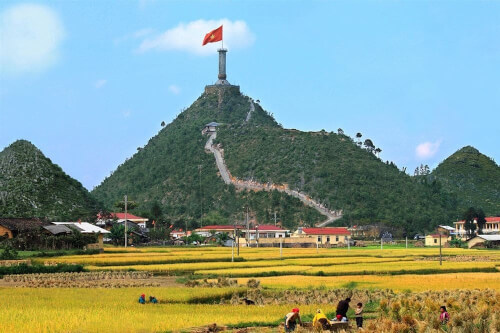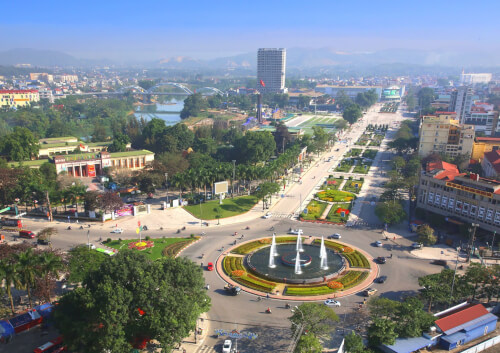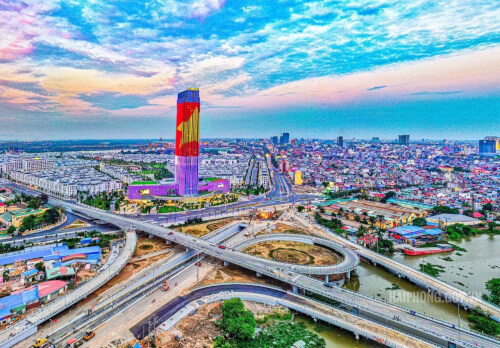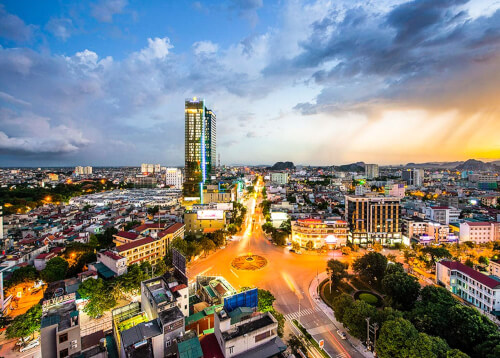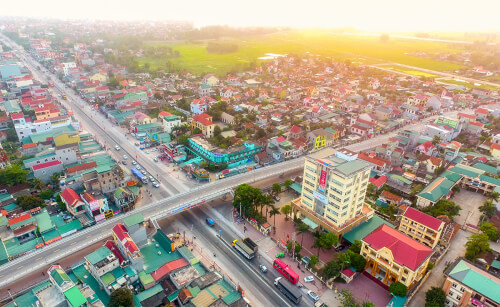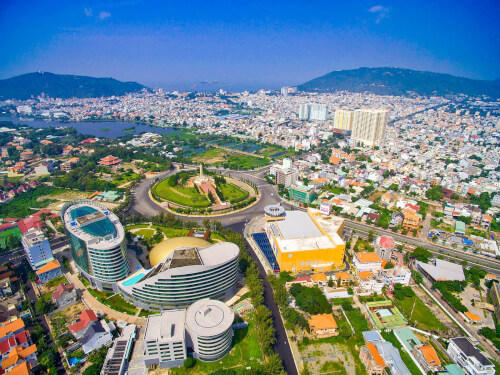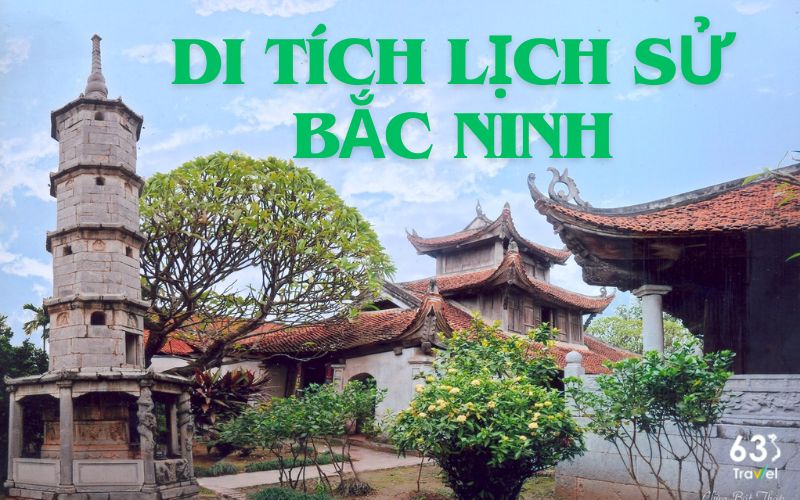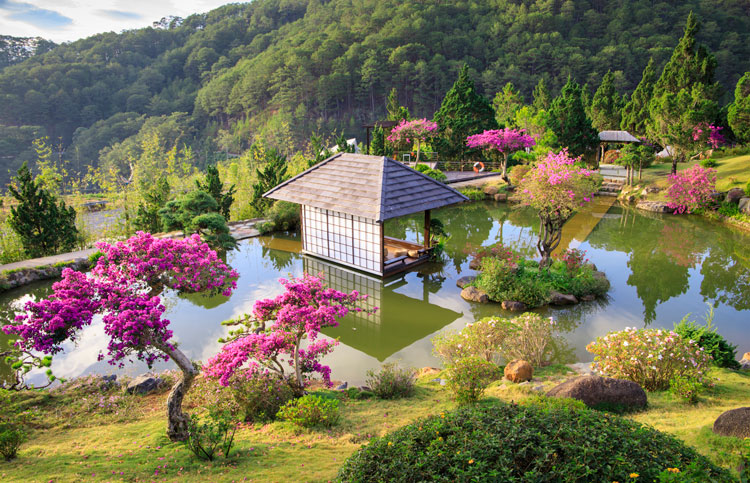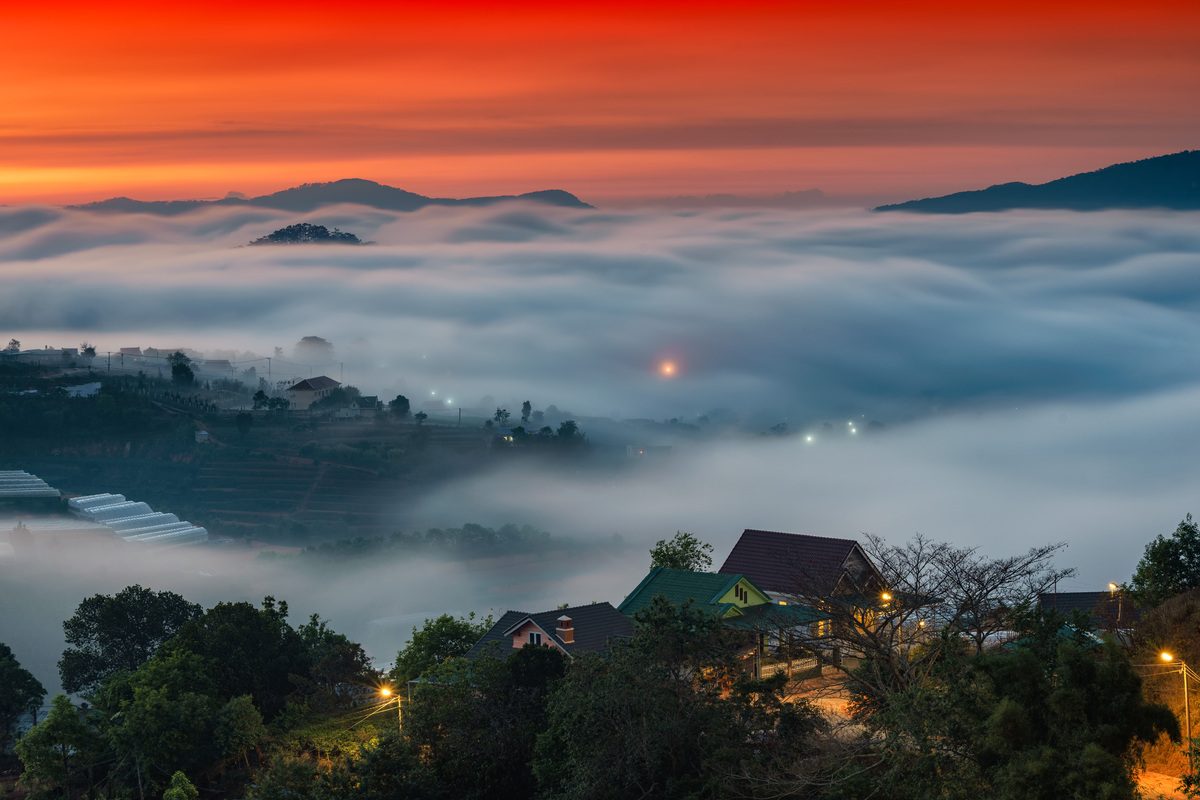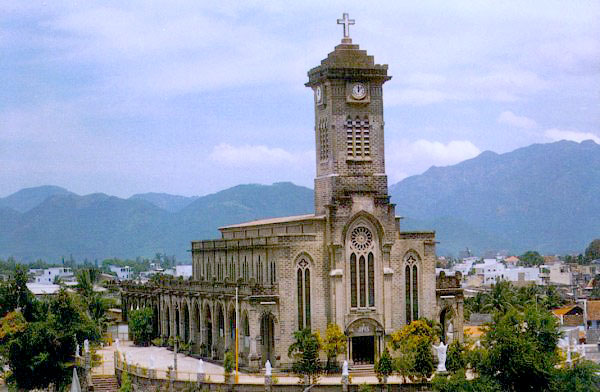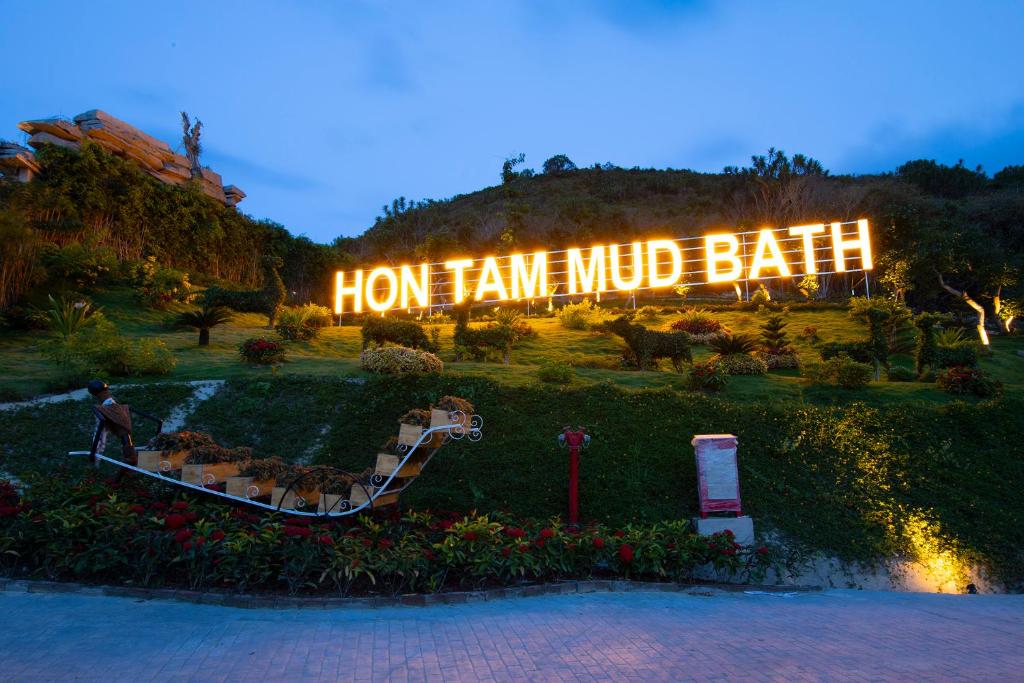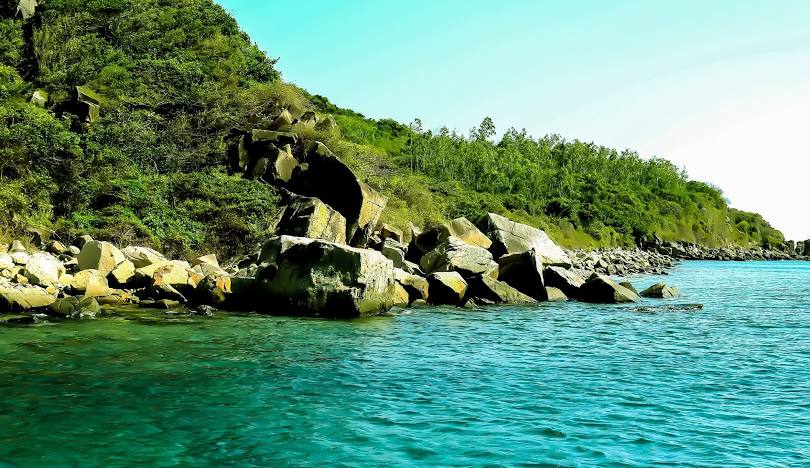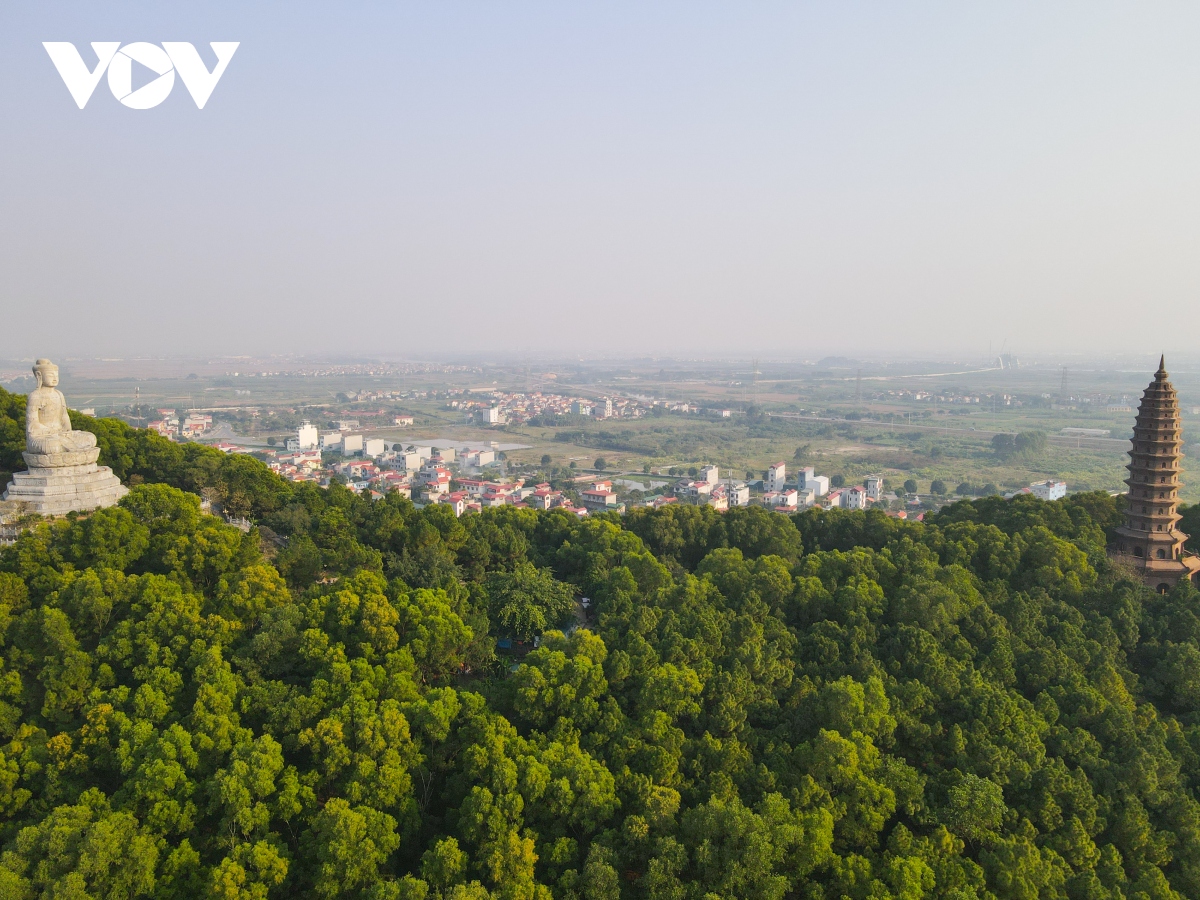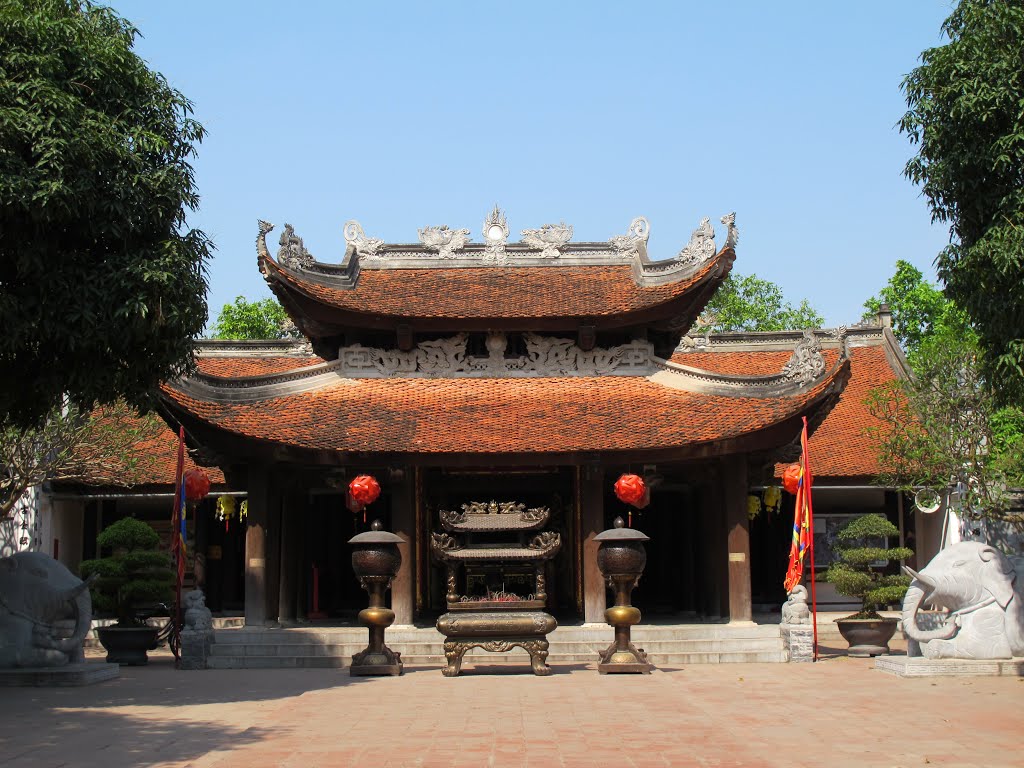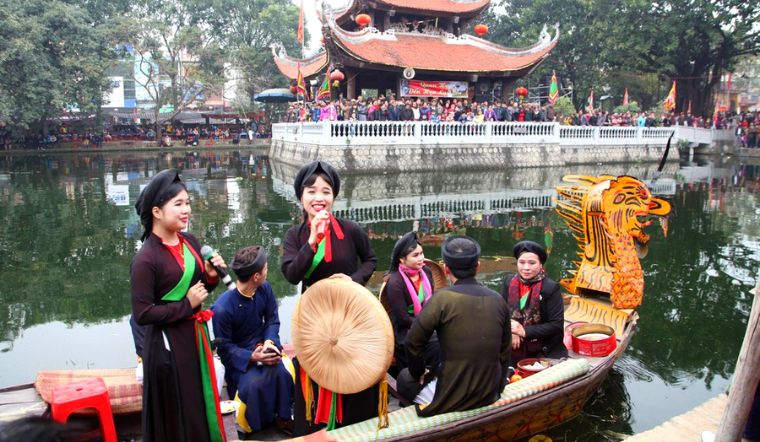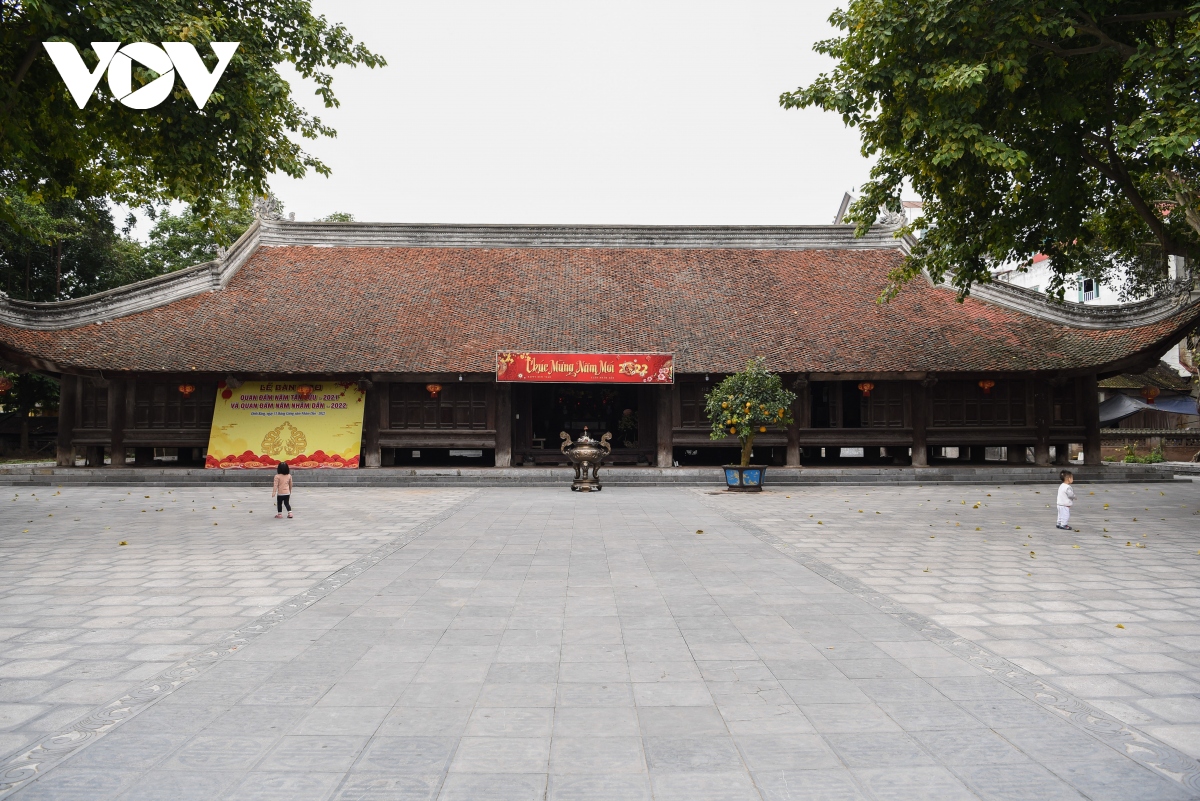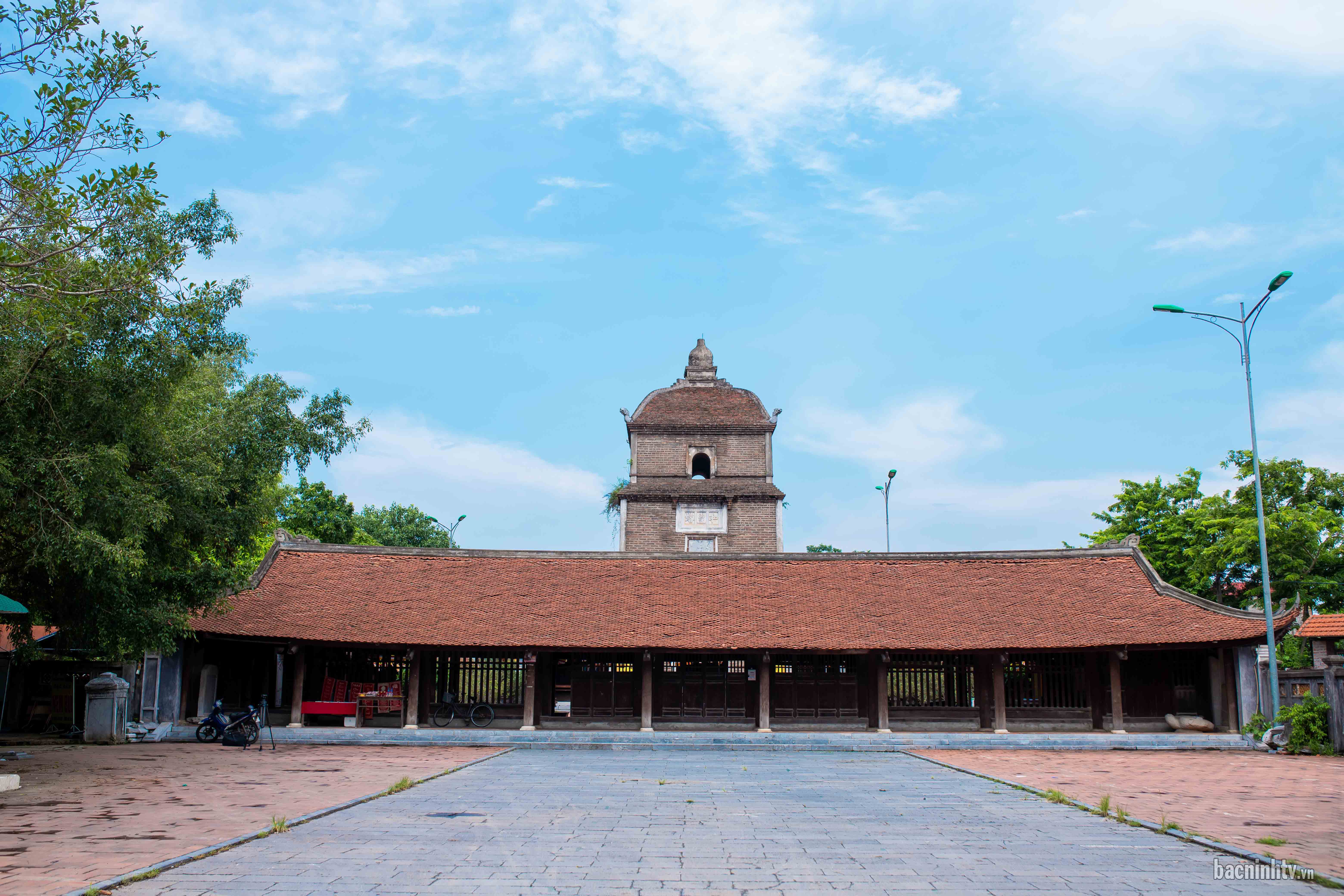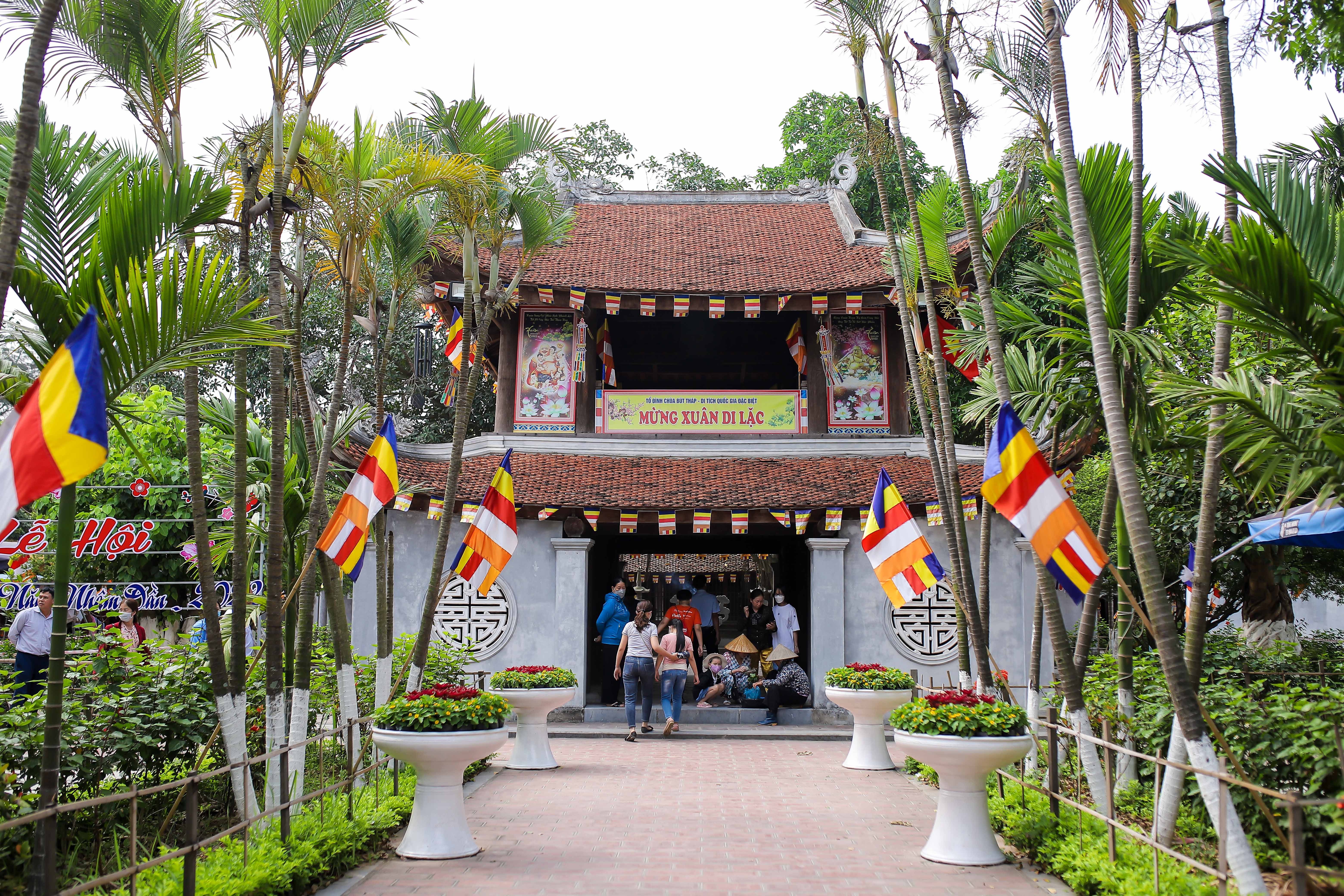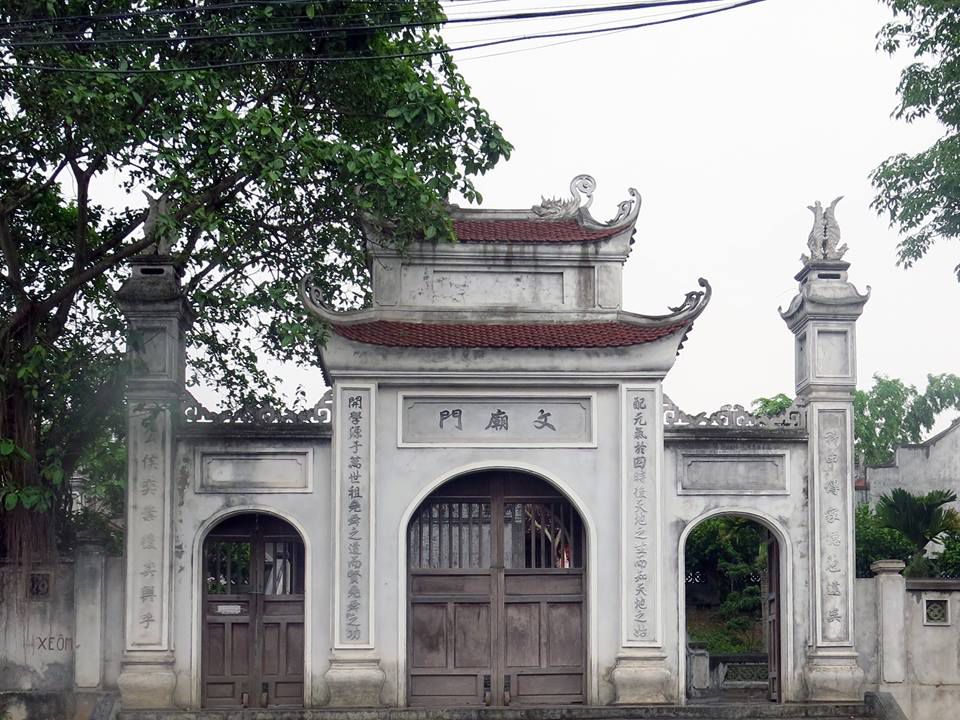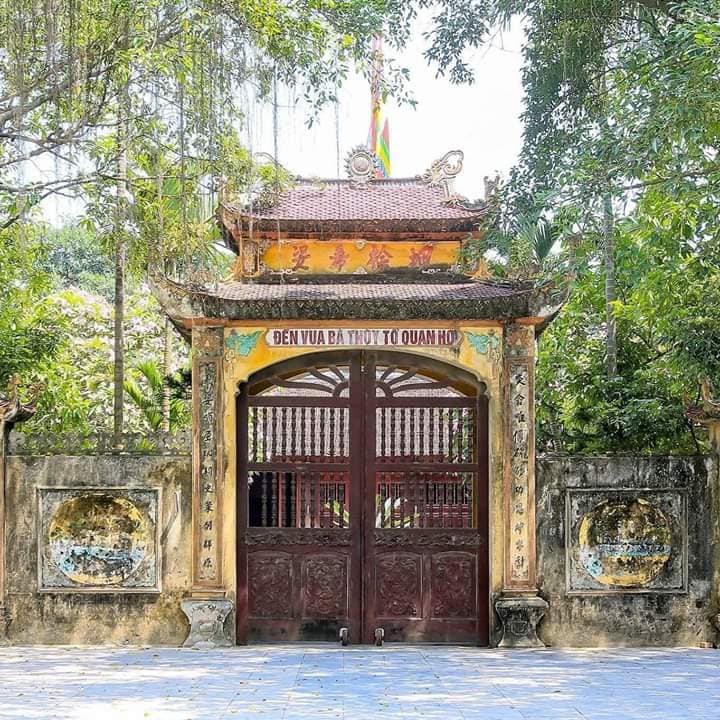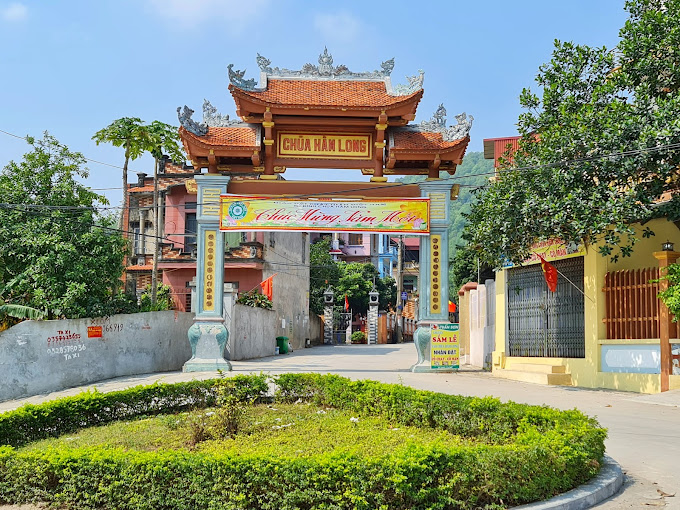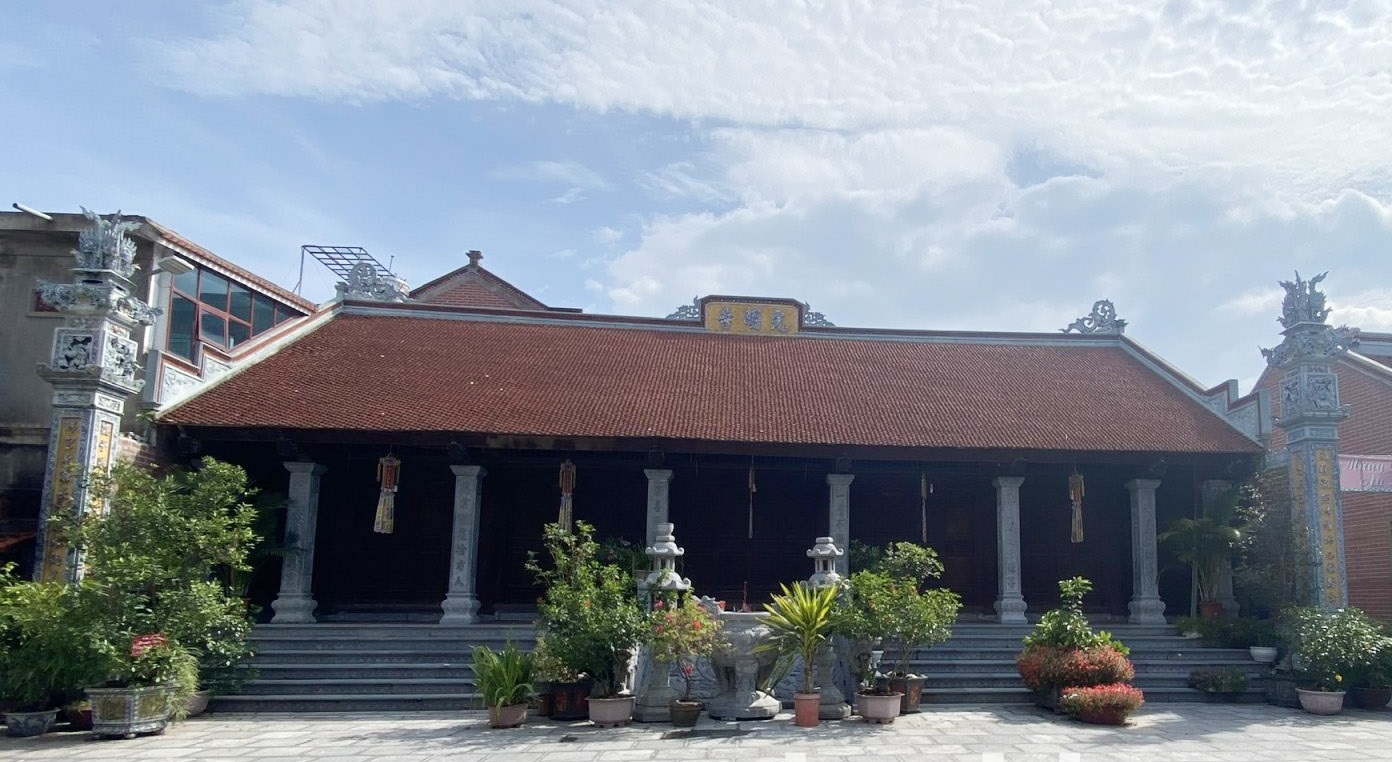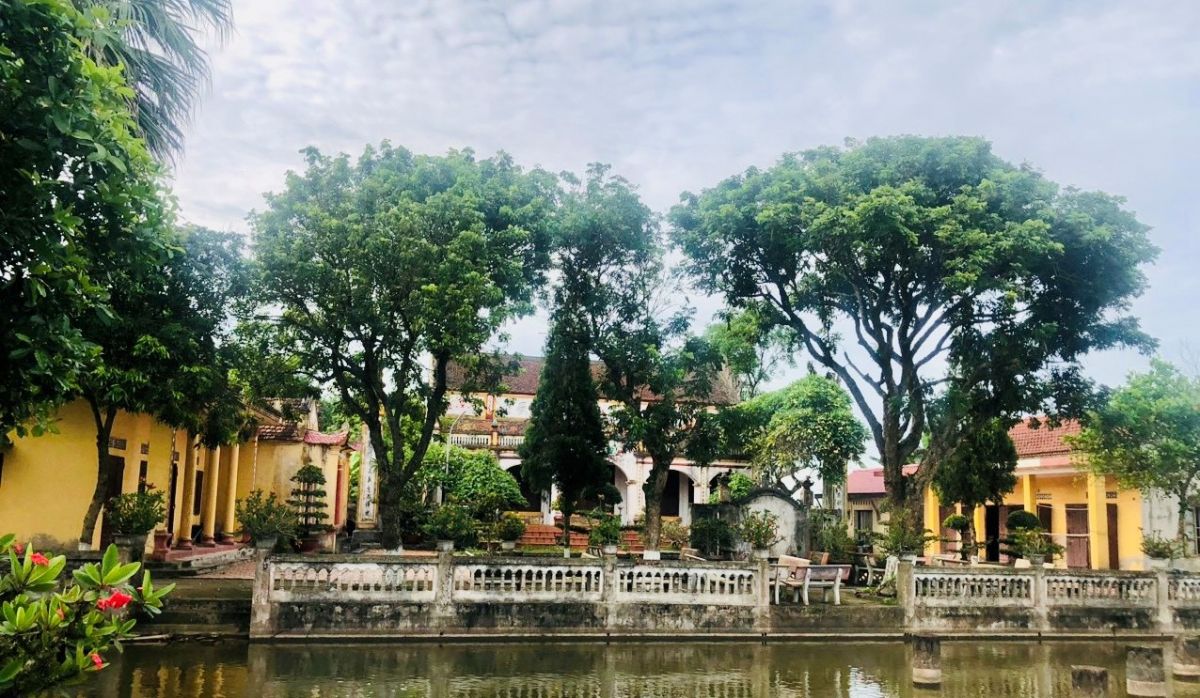Associated with the smooth mandarin melodies, Bac Ninh is not only the cradle of folk culture but also famous for its rich system of historical relics. Each historical site in Bac Ninh is not only a testament to the heroic past but also preserves the quintessence of ancient architecture, attracting tourists to learn and experience the unique culture and history here.
Bac Ninh is known as the cradle of Vietnamese Buddhism, where hundreds of ancient pagodas and temples gather. Besides, this land also possesses many historical relics and mausoleums worshiping famous generals, marking the heroic history of the nation. Join 63Stravel to immediately explore these 22 historical relics in Bac Ninh!
Top 22 historical sites in Bac Ninh you should definitely explore
Check out 22 famous historical sites in Bac Ninh below for you to have the most interesting and meaningful discovery trip.
Phat Tich Temple
Phat Tich Pagoda (also known as Van Phuc Tu) is one of the most famous and oldest spiritual tourist attractions in Bac Ninh, only about 20 km from Hanoi. This more than 1,000-year-old pagoda bears the architectural imprint of the Ly Dynasty, standing out with majesty and harmony in every line.
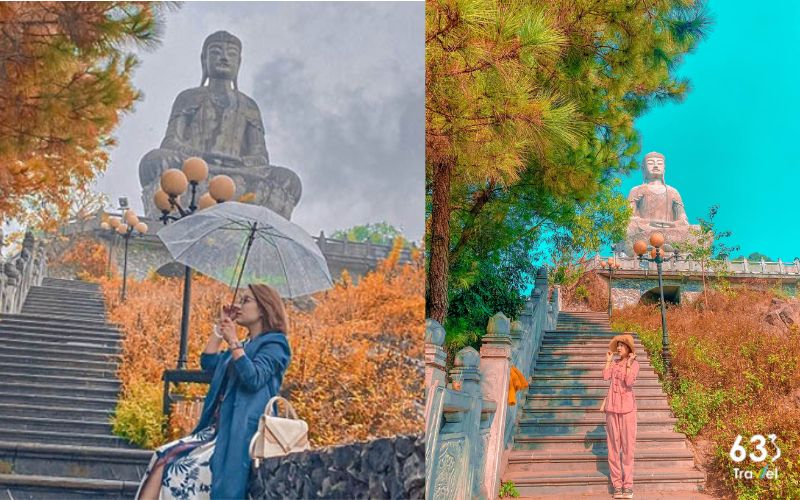
Phat Tich Pagoda - Thousand-year-old ancient temple in Beijing
The special highlight of the pagoda is the 27m high blue stone Amitabha Buddha statue, one of the largest stone statues in Southeast Asia. In addition, the temple grounds also have Pho Quang Tower - a place to store relics of monks, contributing to the sacred and ancient look. Despite experiencing many war events, Phat Tich Pagoda was still restored and preserved, becoming a Historical-Cultural Monument in 1962, attracting tourists to explore and worship.
Temple of Lady Kho
Ba Chua Kho Temple, built during the Ly Dynasty, is one of the most famous and sacred spiritual tourist destinations in Bac Ninh. Every day, the temple welcomes many people to worship and offer incense, wishing for peace, fortune and convenience in their work. In particular, the story of the "negative capital loan" ritual of Ba Chua Kho is trusted by many people, hoping to bring positive fortune and help businesses run smoothly and prosper.
The temple not only has spiritual value but also bears the architectural imprint of the Ly Dynasty, located in the relic complex of the Co Me area with communal houses and pagodas. Legend has it that Lady Kho was a virtuous woman who contributed greatly to reclaiming land, establishing hamlets and managing food warehouses after the Nhu Nguyet victory in 1076. After she sacrificed herself to protect food for the villagers. , she was awarded the title of Phuc Than and people built a temple right at the old warehouse location to express their gratitude.
Having gone through the war with many losses, Ba Chua Kho Temple was restored in the years 1978-1980 and is still preserved intact. With a solemn space, from the three-entrance gate to the harem, every corner of the temple exudes antiquity and solemnity, making this an unmissable destination for those seeking peace and fortune. .
Dong Ho painting village
Dong Ho Painting Village with more than 400 years of history, is a unique symbol of Vietnamese folk art. Located on the Duong River in Thuan Thanh district, Bac Ninh, the village not only preserves sophisticated wood carving techniques but is also the cultural pride of the entire nation.
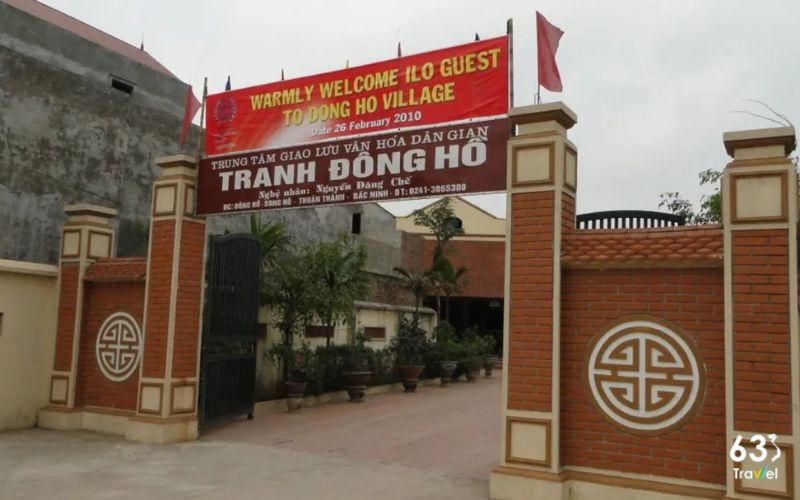
Dong Ho Painting Village - The essence of Vietnamese craft hundreds of years old
Dong Ho paintings stand out with rustic, meaningful lines, recreating the life and traditional customs of ancient Vietnamese people. Despite experiencing recession during the war and social upheavals, Dong Ho painting village still persists in preserving the craft of making paintings.
Today, this place is not only a center for painting production but also an attractive destination for tourists who want to experience the ancient cultural space. In 2013, the art of Dong Ho painting was recognized as a national intangible cultural heritage, affirming the sustainable value of a unique line of paintings that has always existed over time.
Cluster of communal house, temple and pagoda relics in Qua Cam village
Located in Viet Yen district, the cluster of relics of communal houses, temples, and pagodas in Qua Cam village not only preserves spiritual cultural values but is also associated with historical victories. Qua Cam Communal House is located on Tuong Mountain, once a key point in the Nhu Nguyet River defense line in the 11th century.
Rebuilt after being destroyed during the resistance war against the French, the communal house has a "nail" architecture, a funny-nosed tile roof and sturdy ironwood columns. The communal house worships Saint Tam Giang - the village tutelary god, with many ordinations from the Le and Nguyen dynasties, along with epitaphs marking traditional stories of the village.
Qua Cam Temple is located in Camp Sang, worshiping Princess Sanh, who has made great contributions to her homeland. As a concubine of King Tran Anh Tong, she was honored by the people as a blessed goddess after her death. This temple, despite many changes, was still beautifully rebuilt by the people on the old foundation, imbued with ancient architectural style and special spiritual value.
Kim Son Pagoda is located on Kim Son mountain, in the style of the Nguyen Dynasty, with a "nail" shaped architecture with a system of strong wooden columns and sophisticated worship statues. Not only is it a place to worship Buddha, the pagoda also worships Princess Sanh's mother and preserves many precious antiques. The pagoda festival is held on the 20th day of the first lunar month, attracting a large number of visitors.
This cluster of relics was recognized as a Historical Monument by the Ministry of Culture and Information in 1990, demonstrating the importance of Qua Cam in the nation's culture and history.
Luy Lau ancient citadel
Luy Lau ancient citadel (also known as Sieu Loai or Lung Khe) is located in Thanh Khuong commune, Thuan Thanh, Bac Ninh. With a history of more than 2,000 years from the Eastern Han Dynasty, this is one of the oldest citadels in Vietnam, second only to Co Loa. Luy Lau used to be a cultural and educational center and was considered the second capital of our country in the second century.
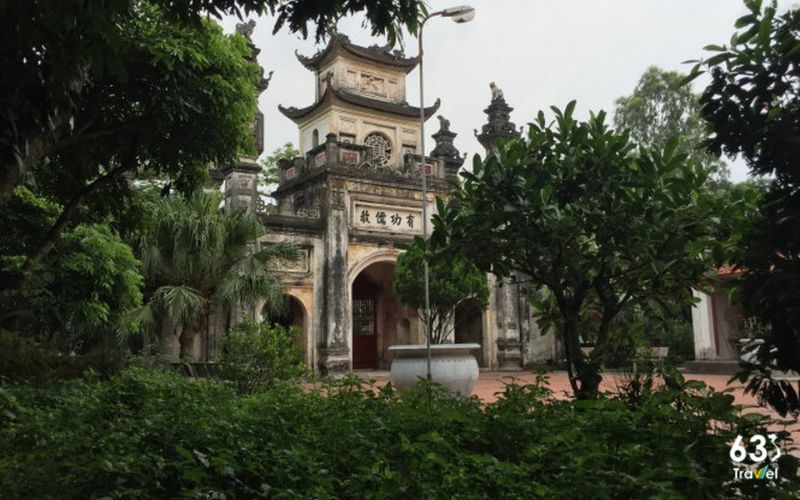
Luy Lau Ancient Citadel - Thousand year old citadel in Bac Ninh
Walking in the citadel, visitors will admire precious antiques and immerse themselves in the peaceful, ancient scenery. Lung Khe Stone Bridge - a bridge paved with 20 stone slabs leading to Lung Khe Temple - is an ideal check-in point, attracting those who love taking photos.
In addition, you can also visit nearby spiritual works such as Binh Pagoda, Phi Tuong Pagoda, Si Nhiep Temple... Famous places not only to visit but also to burn incense and find a peaceful place and quiet.
>> Reference: What should I buy as a gift when traveling to Bac Ninh?
But Thap Pagoda
Honored as a special National Monument, But Thap Pagoda has gone through many ups and downs over time, still retaining its mossy and quiet beauty. The pagoda's unique name comes from the Bao Nghiem stone tower with its shape rising high like a pen, standing tall in the sky.
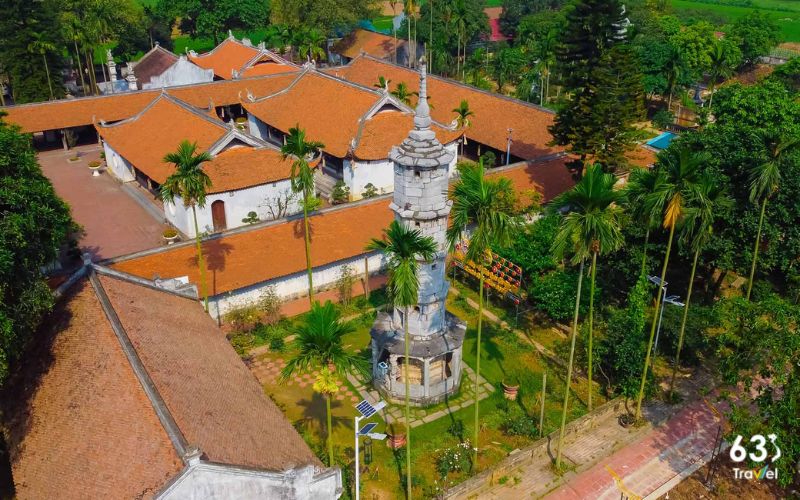
But Thap Pagoda Bac Ninh - A place to store sacred Buddhist Treasures
Located on the romantic Duong River, the pagoda is covered with green moss, bringing a feeling of peace and quiet. Visitors coming here will be able to leisurely walk in the large campus, letting their souls wander in a pure spiritual space. This is truly an ideal stop for those looking for peace and contemplation.
In particular, Bao Nghiem Tower makes visitors admire the sophisticated beauty when each stone slab is meticulously arranged by artisans, perfect down to every detail. But Thap Pagoda also stands out with seven rows of adjacent ancient houses, forming a majestic "Cong" shape, in harmony with the surrounding natural scenery.
Temple of the King and Lady of the Ancients
The Temple of King Ba Thuy To is located in Viem Xa village (Bac Ninh), the only place among the 49 original Quan Ho villages of Bac Ninh and Bac Giang to worship the Quan Ho Patriarch. Built during the Le Dynasty and recognized as a National Historical Site in 1994, the temple has undergone many restorations with its majestic beauty, in harmony with the natural landscape.
The temple's architecture is in Dinh style with two buildings: the Great Temple and the Hau Palace. The Dai Pagoda has three compartments, a tiled roof with a pair of dragons flanking the top of the roof, while the new Harem Palace was restored in 2018 to celebrate the 10th anniversary of Quan Ho being recognized by UNESCO as an Intangible Cultural Heritage of Humanity. type.
King Ba not only gave birth to the Quan Ho melody but also taught rice growing, mulberry growing and cloth weaving, traditional occupations still maintained by Viem Xa village to this day. Every year, the festival takes place on February 6-7 with ceremonies, processions and traditional Quan ho singing. On January 10, the temple also held a Quan Ho singing contest in early spring, attracting a large number of artists to participate, contributing to preserving and teaching the quintessence of Quan Ho to the younger generation.
Ham Long Pagoda
Ham Long Pagoda is an ancient temple more than 1,000 years old in Bac Ninh, not only famous for its ancient architectural beauty but also associated with mysterious spiritual stories. Built during the Ly Dynasty, the pagoda is located on the slopes of Long Linh mountain, surrounded by mountains such as Phuong Hoang, Ky Lan and Turtle, creating a special feng shui terrain.
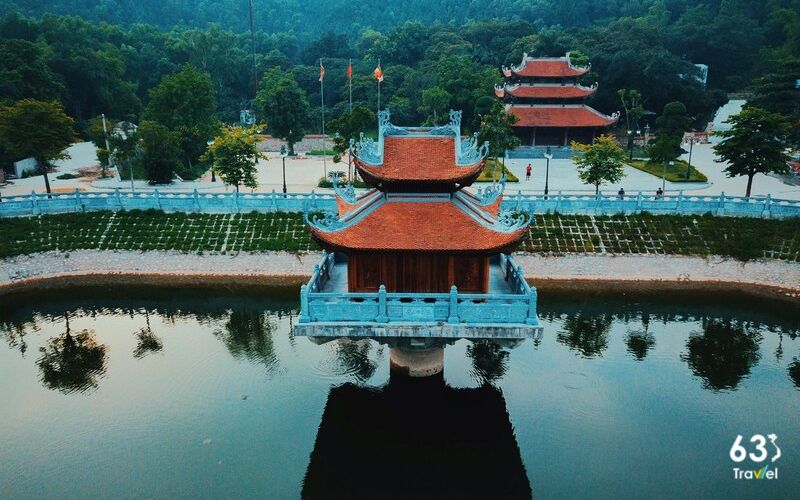
Ham Long Pagoda - The famous temple of the dead in Kinh Bac
The pagoda has a strong Ly Dynasty architecture, with moss-covered towers, an ironwood Tam Bao area and a sophisticated layout. The campus is more than 9,000m² including works such as Tam Quan, the Patriarch's house, the Monk's house and many ancient stupas. In particular, the pagoda also preserves 14 ancient tomb towers from the Tran and Le dynasties along with bronze Buddha statues with elegant charisma and sophisticated casting art.
Ham Long Pagoda is also known as the largest "pagoda that traps dead and mourns" in Vietnam. According to legend, Zen master Nhu Trung Lan Giac once created dharma protections to relieve the dead and help the spirits escape soon. Thanks to this sacred reputation, many families come to the temple to cut the insects and send their souls that have not yet passed away.
Festivals and activities at the pagoda attract a large number of Buddhists and tourists, with many people coming to pray for wealth, fortune, and to admire the pure scenery. Ham Long Pagoda is not only a spiritual destination but also a place to preserve cultural values, guiding people to good things and away from evil.
Bac Ninh Cathedral
Bac Ninh Cathedral is located on Ngo Gia Tu Street, Ninh Xa, only 300m from Bac Ninh ancient citadel, and is a long-standing religious and cultural symbol. Started in 1889 by Bishop Antonio Le and completed in 1892, the church is not only an important place for religious activities but also a special historical heritage of Bac Ninh diocese.
In Italian Baroque style, the church is designed in the shape of a cross, with 12 main columns symbolizing the 12 apostles. The highlight is two 22m high towers, said to symbolize the image of brother and sister of the Quan Ho homeland. Inside the tower hang three bronze bells from the 19th century, ringing regularly, becoming familiar sounds associated with life here.
The church's interior space is airy and impressive, with a sanctuary made from red rosewood, a lattice ceiling and glass paintings depicting the 20 mysteries of the Rosary. This place also houses the statue of the Queen of the Holy Rosary - a gift from the Spanish Dominican Fathers, and the statue of St. Joseph Hoang Luong Canh, a martyr canonized by Pope John Paul II.
Despite the war and a restoration in 1990, the church still retains its ancient and sacred beauty. Today, this place is not only the center of religious activities for parishioners but also attracts tourists and young people to visit, explore the architectural beauty and find a peaceful place in their spiritual life.
Church of 18 Doctors surnamed Nguyen
Located in Kim Doi village, Kim Chan ward, Bac Ninh city, the 18th Doctor Nguyen Church was built in the late 15th century on the old house of Mr. Nguyen Lung - the founder of this place. The project was expanded with the Tien Te house in 1990 and the water pavilion in 2015. Currently the entire campus has been surrounded by protective walls, the pond area and water pavilion have been renovated to be spacious and clean.
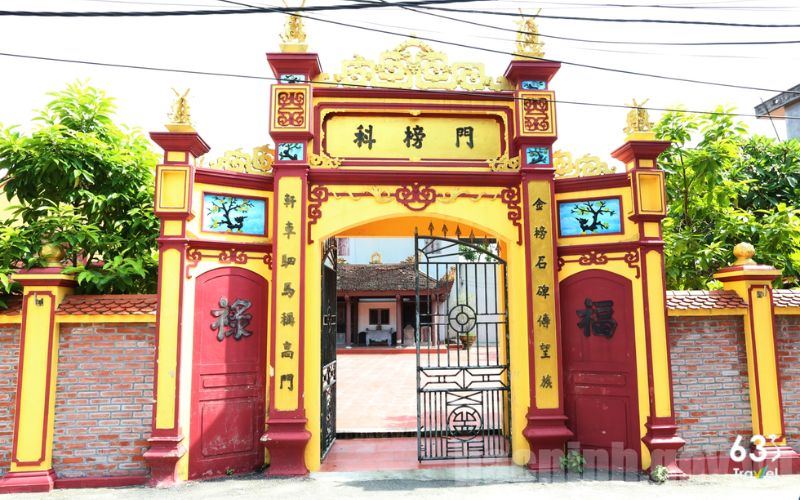
Church of 18 Doctors of the Nguyen family Ranked as a national relic
The church facing west has Nhi style architecture, including the front hall and back hall. The altar has 3 compartments, an open space with a tiled roof, the roofs and rafters are embossed with delicate patterns. The sturdy wooden frame structure follows the style of stacking beams and gong stands, demonstrating the ingenuity in traditional construction techniques. The back hall consists of 5 compartments, the middle gate is carved with the Tho character pattern and the structure of the main structure is sophisticated, reflecting the characteristics of Vietnamese communal house and pagoda architecture.
The church is a place to worship ancestors, famous academics and teachers who have contributed to educating the next generation, contributing to maintaining the Nguyen family's tradition of studiousness and academics. With profound historical and cultural significance, the work has been ranked as a National Historical and Cultural Relic according to Decision No. 100-VH/QD dated January 21, 1989.
Cluster of relics: Van Mau Temple - Nghe Chu Mau - Co Trach House
For a long time, the Kinh Bac region, along the banks of the Cau River, has passed down the belief of worshiping Saint Tam Giang - three talented generals of Trieu Quang Phuc, who had the merit of fighting the Luong invaders in the 6th century. Among about 372 villages worshiping Saints, Van Duong commune stands out with a cluster of unique relics: Nghe Chu Mau, Co Trach House and Van Mau Temple.
Van Mau Temple was built right after the Saints' mother, Phung Thi Nhan, passed away. The temple is located on high ground, shaped like a "dragon's jaw," with wells on both sides that are likened to dragon eyes. Although it was destroyed in 1952, the temple was restored and expanded by people in many stages, retaining its typical sophisticated architectural features.
Co Trach's house is not far from the temple, where Ms. Phung Thi Nhan lives. After her death, the house became a place of worship and was restored many times to honor the merit of the mother who gave birth to Thanh Tam Giang.
Nghe Chu Mau with ancient architecture still retains four green stone statues symbolizing the Saints. This relic contains many valuable documents and antiques, deeply reflecting local history and culture.
In 1989, the Van Duong relic complex was recognized as a National Historical Site, affirming its profound cultural and spiritual value. At the same time, it is a symbol of patriotism and national heroism.
Cluster of communal and temple relics at Dieu Son Pagoda
The Dieu Son temple and pagoda relic cluster is located at the foot of Dieu Son mountain, Thi Cau ward, Bac Ninh city, bearing deep historical and cultural imprints. Majorly restored in 1687 and many times through different stages, the current architecture belongs to the Nguyen Dynasty, with a "first Saint, then Buddha" layout.
The temple has a Nhi-shaped structure, including an altar with 3 compartments and 2 wings with a durable ironwood frame and a harem, a place to worship Saint Giong's mother and the ancient horizontal panel "Mother Nghi Thien Ha". Dieu Son Temple also worships Saint Tam Giang and General Tran Luu and his wife, heroes who contributed to the resistance war against the Ming invaders.
Next to the temple, Dieu Son Pagoda has Dinh architecture with 5 compartments forecourt and 3 compartments for Upper Palace. The pagoda still preserves many precious relics such as statues, bronze bells and stone stele from the Nguyen Dynasty.
With unique historical and artistic value, the Dieu Son relic complex was ranked as a national historical and cultural relic by the Ministry of Culture and Information in 1990.
Dai Bi Pagoda, Bac Ninh
Dai Bi Pagoda (Bac Ninh) (also known as Tay Pagoda or To Pagoda) is located in Van Ty village, Thai Bao commune, Gia Binh district, on the south bank of Duong River. This is an ancient temple with a long history, built by Huyen Quang in 1305 (Quy Mao) during a visit to his parents' hometown. The pagoda is named "Great Compassion" to honor the compassion of Avalokiteśvara Bodhisattva, with the meaning of saving sentient beings from earthly suffering.
Over time, the pagoda has been renovated many times during the Le and Nguyen dynasties, but still retains its unique ancient architecture. The temple grounds are divided into many areas: Tam Bao, Front Street, Upper Palace, and Tam To Temple. The Tam Bao area faces south, featuring a sturdy ironwood frame and graceful curved roofs. Inside are exquisite statues, most of which were created during the Nguyen Dynasty.
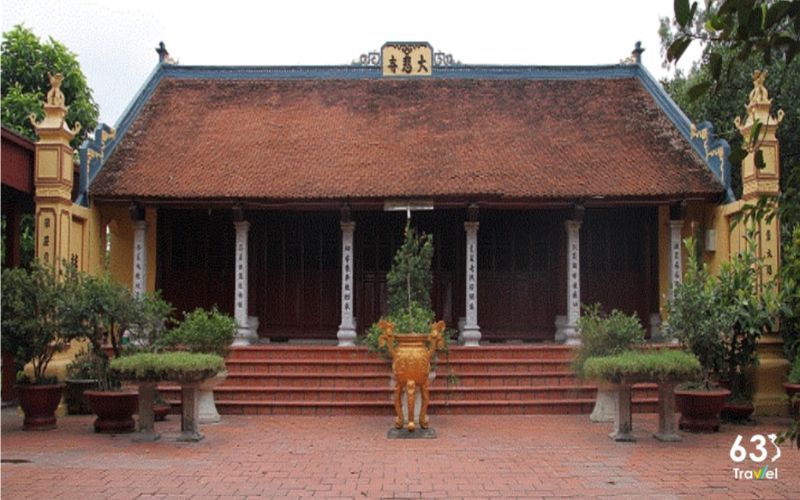
Dai Bi Pagoda's famous architecture in Kinh Bac region attracts many tourists
Behind Tam Bao is the stele house, where the names of the patriarchs are recorded, and nearby is the temple worshiping Tam To - the three patriarchs of the Truc Lam Zen sect: Buddha Emperor Tran Nhan Tong, Phap Loa and Huyen Quang. Statues of the ancestors are skillfully carved, showing a pure demeanor.
Dai Bi Pagoda impresses with its quiet, harmonious space and green trees, bringing a sense of peace to visitors. Over time, moss-covered tile roofs, faded stone shelves with engravings, and ancient trees further highlight the quiet, historical beauty of this place. In 1990, the pagoda was recognized as a national historical and cultural relic, attracting many tourists to come to worship and meditate.
>> Should read: Top provinces/cities of solo travel destinations in Vietnam
Dinh Bang Communal House
One of the great check-in locations in Bac Ninh that you should not miss is Dinh Bang village communal house. Built in the late 18th century, the communal house stands out with its unique and ancient architecture. The structure of the communal house includes a main room with walls on both sides, gradually increasing in height, creating a spacious space for meetings of the villagers.
When you set foot in the communal house, you will be fascinated by the exquisite reliefs, with more than 500 sculptures richly depicting aspects of local culture and history, bringing a feeling of majesty and solemnity. . This place is not only a cultural symbol of Bac Ninh but also a testament to the talent of ancient artisans. Dinh Bang communal house was recognized as a National Monument in 1961, an ideal destination for those who want to explore the traditional beauty of Vietnamese culture.
Do Xa pagoda communal house
Do Xa Pagoda is located in the center of Do Xa neighborhood, Ninh Xa ward, Bac Ninh city, and is one of the prominent pagodas of this land. Combined with Do Xa Communal House, the pagoda forms a harmonious architectural complex, without walls, providing an airy space and close to nature. Recognized as a National Historical and Architectural Monument in 1992, Do Xa Pagoda stands out with its traditional, sophisticated architecture in every carved detail, demonstrating the talents of artisans through system of Buddha statues and worship objects.
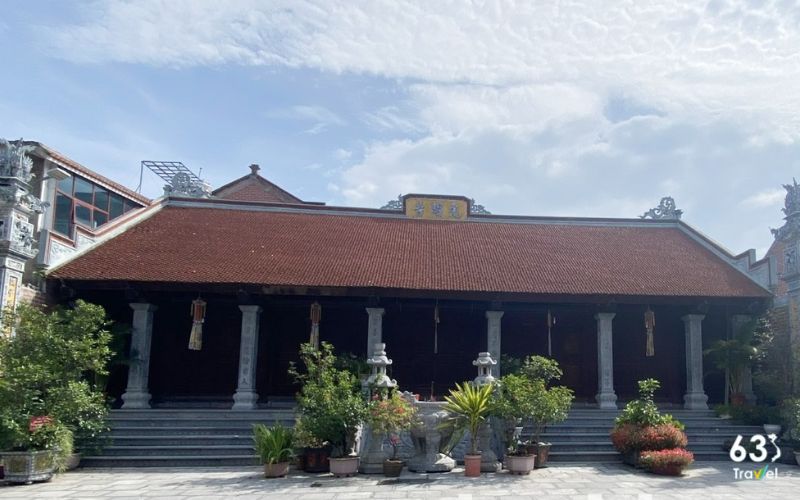
Do Xa Pagoda is ranked as a National Monument
The Three Jewels Court of the pagoda is designed in the Dinh style with a 5-compartment Front Hall and a 4-compartment Upper Palace, opened to the southwest by a table-style door, leading into the yard with 7 green stone steps. The pagoda's roof is tiled, prominent with the name "Quang Minh Tu" exquisitely decorated in Chinese characters. The temple grounds also include auxiliary buildings such as the Tam Quan gate, the Patriarch's house, the model house and the monk's house, all of which have harmonious and traditional beauty.
Do Xa Pagoda also preserves many precious artifacts such as Linh bi stele tu bi ky (1706), bronze bell cast in 1898 and Buddha statues of the Nguyen Dynasty. Do Xa Pagoda Festival takes place from the 13th to 15th of the first lunar month, becoming a religious and belief center for local people, contributing to education and promoting community solidarity to help each person lead a good path. and eliminate evil.
Bac Ninh ancient citadel
Built in 1805, Bac Ninh Citadel is a typical symbol of Vietnam's ancient military architecture. The citadel stretches from Yen Xa village to Do Xa, associated with the cultural and spiritual life of Bac Ninh people, even mentioned in famous quan ho songs of the region.
The citadel is protected by a moat and has four gates, along with a long wall system built of bricks (previously using soil and laterite), creating a majestic appearance for the building. With a length of more than 200 meters and a height of over 4 meters, Bac Ninh Citadel still retains its grandeur and majesty, becoming one of the most beautiful citadels in the North, preserving many precious historical and cultural values. treasure.
Dau Pagoda
Dau Pagoda was built in 187 and completed in 226, located in Dau area. With the "Internal, foreign" architecture, Dau Pagoda includes a front hall, incense burner and upper hall, creating a sacred space, blending Indian Buddhism and Vietnamese folk beliefs.
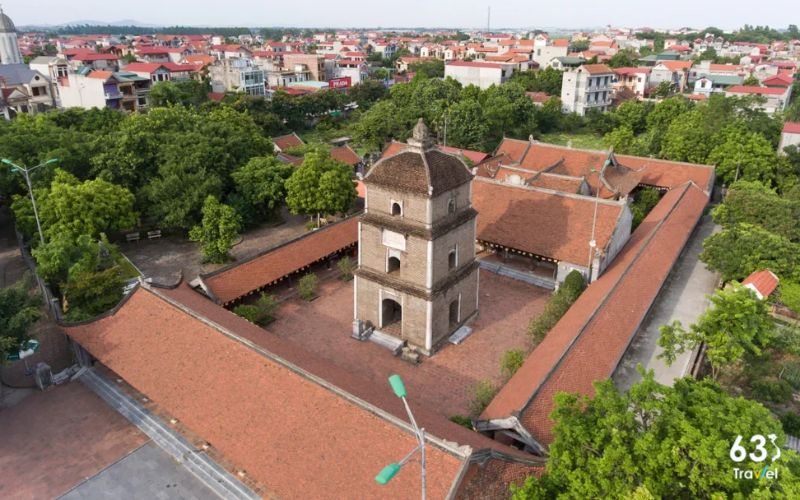
Dau Pagoda Bac Ninh - The oldest Buddhist temple in Vietnam
Prominent in the pagoda complex is the nine-storey Hoa Phong tower, symbolizing the cosmic mountain, with the clear blue lake and ancient tower garden next to it, creating a peaceful and quiet space. Ranked as a special national historical and cultural relic in 2013, Dau Pagoda is not only a place of worship but also an attractive destination for tourists to explore culture and history.
Temple of Nguyen Phuc Xuyen
Nguyen Phuc Xuyen Temple is located in Dai Phuc ward, Bac Ninh city, and is a historical relic with great cultural value. Located on a beautiful land and open space, the temple was built to honor Nguyen Phuc Xuyen, a highly influential figure in Kinh Bac history.
Born in 1613, he studied Confucianism but had a passion for Zen, and was famous for his talent in making medicine and treating people and even Lord Trinh. After his death in 1696, his descendants established a temple to commemorate and continue his career.
The temple currently preserves many valuable documents and artifacts, especially documents in Chinese characters from the Nguyen Dynasty such as horizontal panels, parallel sentences and bronze bells. These artifacts not only mark the life and career of Nguyen Phuc Xuyen but also reflect the customs and cultural life of the people here since ancient times.
Phuc An Pagoda, Bac Ninh
Phuc An Pagoda is a prominent destination in Bac Ninh, located in An Dong village, Lac Ve commune, Tien Du district. This area was once a fertile land, rich in legends and national cultural heritage.
Built in 1599 under the reign of King Le Trung Hung, the pagoda went through many historical ups and downs and only 5 ancestral halls remained in 1951. By 1993, people joined hands to repair and expand the pagoda with many Constructions such as the Three Jewels, the Patriarch's house and the bell tower.
The pagoda is considered sacred, once sheltered the king, and was later named An Dong. Over time, despite facing natural disasters and wars, the people's respect has helped the pagoda revive and preserve its traditions. Today, Phuc An Pagoda is not only spacious but also attracts many tourists to visit and worship, becoming an important part of the local spiritual and cultural life.
Bac Ninh Temple of Literature
Bac Ninh Temple of Literature was built during the Le Dynasty, symbolizing the studious tradition of Kinh Bac. Located about 30km from Hanoi, this is one of six literary temples in Vietnam, clearly reflecting the historical and cultural values of feudal dynasties.
Initially, the Temple of Literature was located on Chau Son Mountain, Thi Cau but was moved to its current location in 1893 after being damaged. The project includes many items such as three gates, front altar, back hall and two rows on the left and right, with exquisitely decorated three gates.
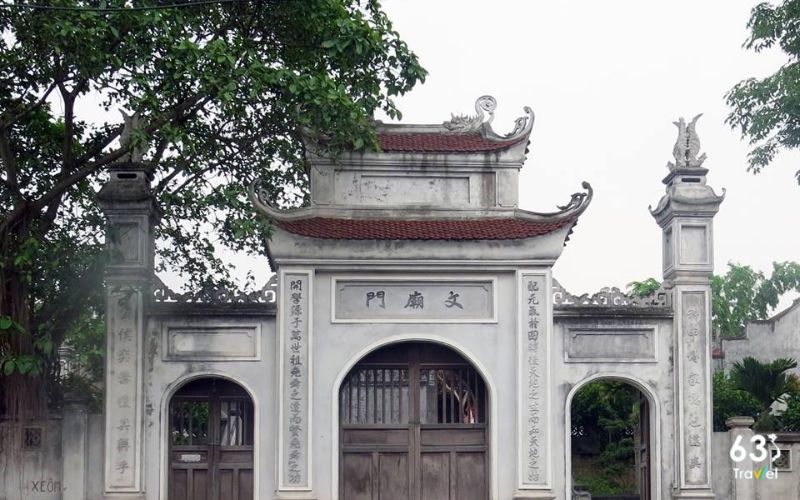
Bac Ninh Temple of Literature - Echoing forever the fragrance of the land of studiousness
The 5-compartment altar hall with elaborate motifs, a place to worship talented men such as Confucius and Duke Zhou, has been vividly portrayed in doctoral stone stele. In particular, 15 doctorate steles honor 677 doctors from 1075 to 1919, who contributed to the cause of building and protecting the country.
The stele "Bac Ninh province restores the Temple of Literature Bi Ky" praises the role of the Temple of Literature and the contributions of the community in the restoration work. Bac Ninh Temple of Literature is now not only a historical relic but also a cultural center, regularly organizing memorial activities and encouraging the tradition of studiousness, attracting a large number of students to offer incense and study. from shining examples. On the full moon day of January every year, a memorial incense offering ceremony is also held, expressing gratitude to ancestors and praying for peace in the country and people.
Do Temple and Tombs of Ly Dynasty Kings
Besides the ancient citadel and pagodas, Do Temple is one of the prominent destinations in Bac Ninh, attracting a large number of tourists every year. This place is not only a place of worship for the eight Ly Dynasty kings but also a cultural heritage with rich historical significance. After many restorations, Do Temple still retains its original architectural beauty, blending folk and royal styles.
Located on a 31,000m² campus, Do Temple offers a fresh natural space with a peaceful lake and exquisite carved details. The main shrine area stands out with important historical content such as the Capital Relocation Edict and the poem Nam Quoc Son Ha, expressing the national pride and spirituality of the Vietnamese people. With the perfect combination of architecture and landscape, Do Temple becomes an ideal stop for those who love to explore culture and history.
Phu Lang Pottery Village
When arriving in Phu Vo, don't forget to visit Phu Lang pottery village - an ancient village located on the romantic Cau River. Here, you will not only be fascinated by the peaceful natural beauty but also have the opportunity to learn about the delicate process of creating beautiful ceramic products.
Phu Lang pottery village has a history dating back to the Tran Dynasty and is still preserved to this day. Visitors will admire many unique ceramic products, from household items to decorative art works.
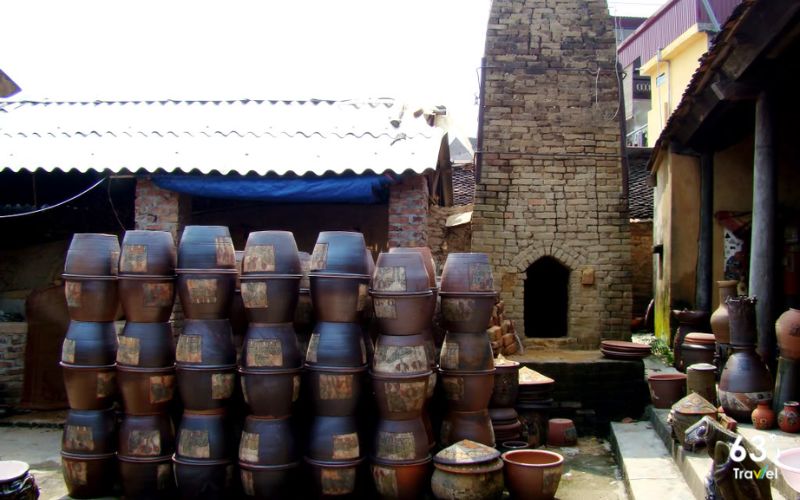
Phu Lang Pottery Village - Famous pottery village of 700 years in Kinh Bac
In particular, this place is famous for its bong-touch joinery technique, a unique method of creating ceramic products with high artistic value. Take time to immerse yourself in this unique cultural space, where tradition and creativity collide in a wonderful way.
Hopefully the above article has given you an interesting and overview of the unique historical relics in Bac Ninh. Each location not only contains cultural and historical value but is also a testament to the development of this land. If you plan to explore this land full of potential and tradition, don't forget to access the 63Stravel application to book a Bac Ninh hotel room at attractive discounts! Wishing you a trip full of experiences and memorable memories!
Bac Ninh
3811 view
Update day
: 29/10/2024
63Stravel
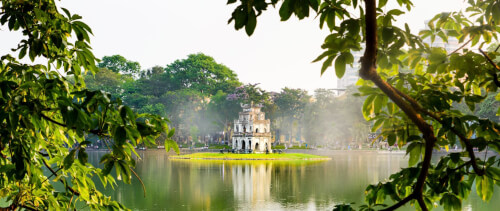 Hanoi (6)
Hanoi (6)
 Lao Cai (1)
Lao Cai (1)
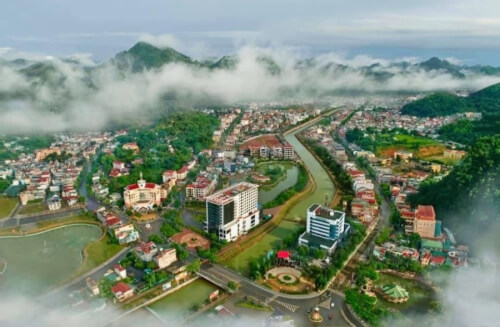 Son La (2)
Son La (2)
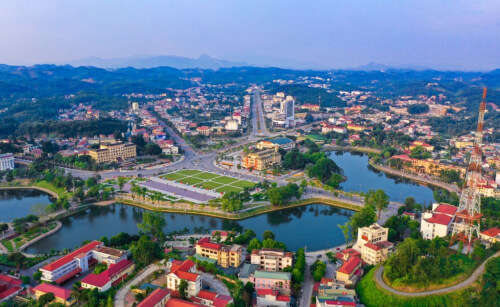 Yen Bai (1)
Yen Bai (1)
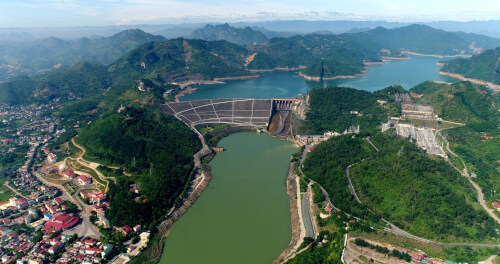 Hoa Binh (1)
Hoa Binh (1)
 Quang Ninh (18)
Quang Ninh (18)
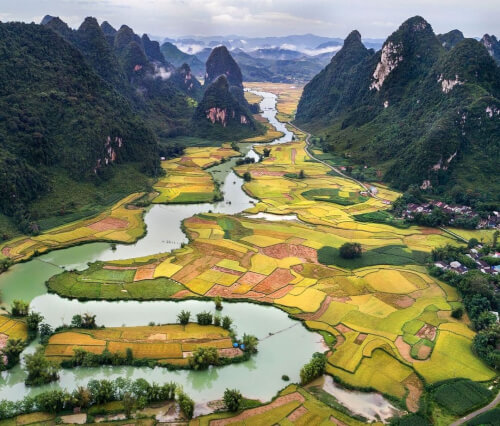 Ninh Binh (1)
Ninh Binh (1)
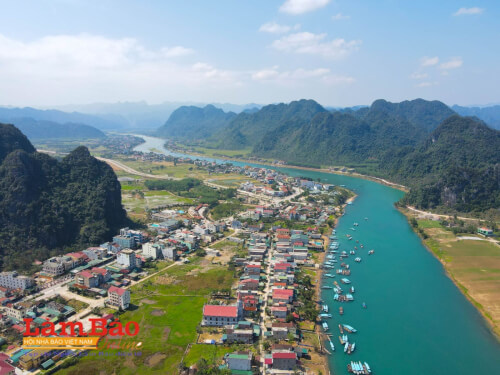 Quang Binh (2)
Quang Binh (2)
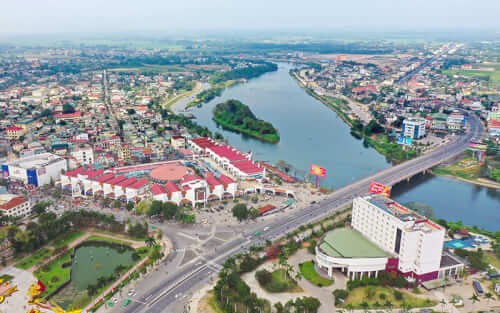 Quang Tri (1)
Quang Tri (1)
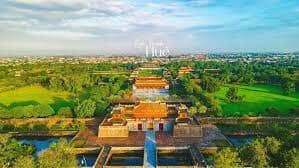 Hue (17)
Hue (17)
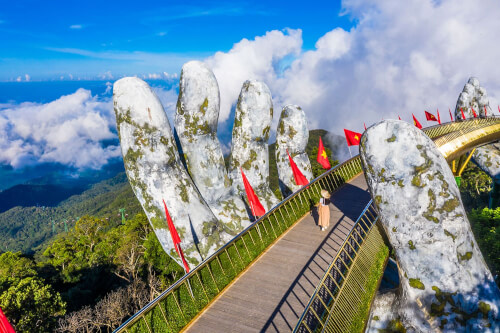 Da Nang (24)
Da Nang (24)
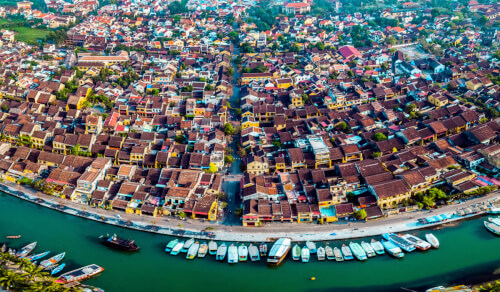 Quang Nam (16)
Quang Nam (16)
 Binh Dinh (1)
Binh Dinh (1)
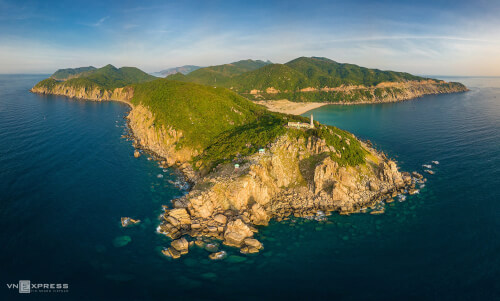 Phu Yen (1)
Phu Yen (1)
 Khanh Hoa (12)
Khanh Hoa (12)
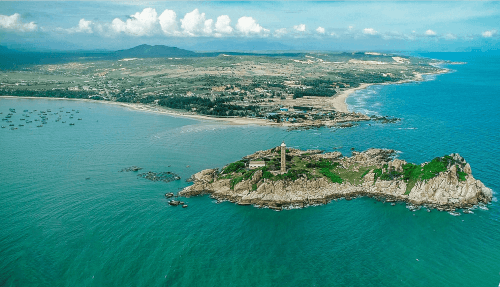 Binh Thuan (1)
Binh Thuan (1)
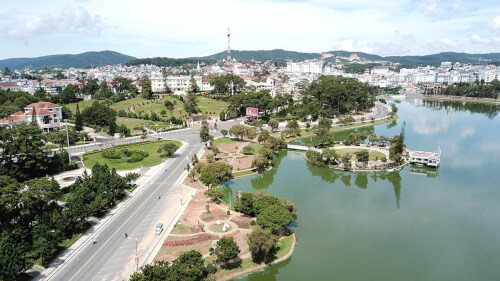 Lam Dong (7)
Lam Dong (7)
 Ho Chi Minh City (3)
Ho Chi Minh City (3)
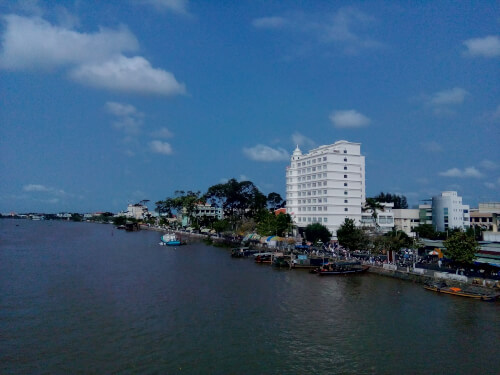 Ben tre (3)
Ben tre (3)
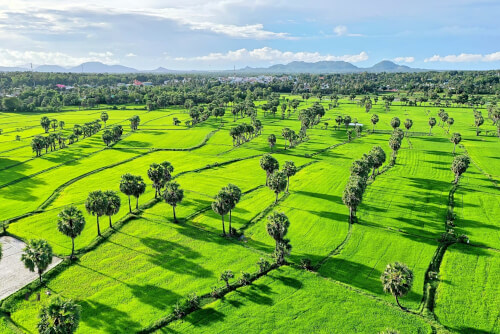 An Giang (1)
An Giang (1)
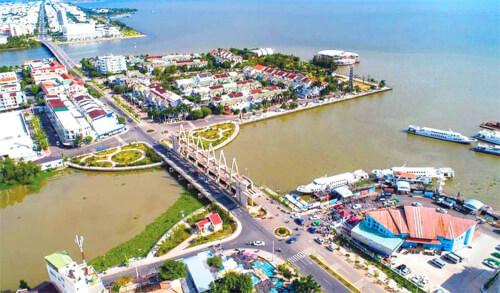 Kien Giang (4)
Kien Giang (4)
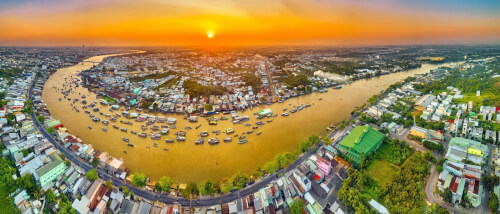 Can Tho (3)
Can Tho (3)
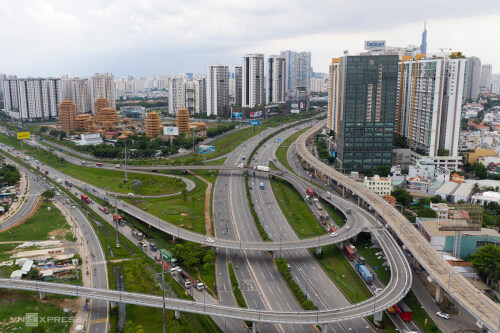 Foreign (3)
Foreign (3)

 vn
vn en
en ja
ja ko
ko zh
zh


















